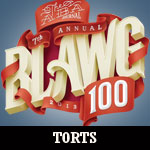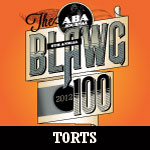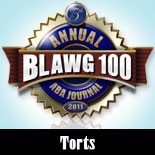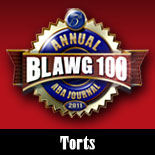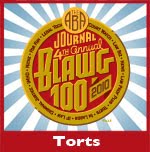
We regret to inform our readers that various media outlets, including the American Cancer Society Pressroom Blog, have reported that the “International Agency for Research on Cancer (IARC), a part of the World Health Organization, has classified processed meat as a cancer causing agent (carcinogen), and red meat as a probable carcinogen.” These conclusions apparently “are based primarily on evidence showing an increased risk of colorectal cancer” and “also evidence of increased risk of pancreatic and prostate cancer.”
We here at Abnormal Use have questions (after we pick ourselves up off the floor). For starters, how did the IARC reach these conclusions?
According to the WHO, the following is the more detailed basis for the conclusion as to red meat:
After thoroughly reviewing the accumulated scientific literature, a Working Group of 22 experts from 10 countries convened by the IARC Monographs Programme classified the consumption of red meat as probably carcinogenic to humans (Group 2A), based on limited evidence that the consumption of red meat causes cancer in humans and strong mechanistic evidence supporting a carcinogenic effect. This association was observed mainly for colorectal cancer, but associations were also seen for pancreatic cancer and prostate cancer.
As to processed meats, which include “hot dogs (frankfurters), ham, sausages, corned beef, and . . . beef jerky as well as canned meat and meat-based preparations and sauces,” the WHO explains only that “[p]rocessed meat was classified as carcinogenic to humans (Group 1), based on sufficient evidence in humans that the consumption of processed meat causes colorectal cancer.” So, “a Working Group of 22 experts from 10 countries” reviewed “scientific literature” and found “limited evidence” suggestion an “association” between consuming red meat and three types of cancer, and this same group of experts found “sufficient evidence” that the consumption of processed meat “causes” a specific type of cancer? We carnivores at Abnormal Use feel compelled mine down into these conclusions and educate our non-toxic tort lawyer readers on some of these terms that the WHO has used to accuse an American dietary staple of wrongdoing.
First of all, what is a carcinogen?
According to the American Cancer Society, carcinogens are “[s]ubstances and exposures that can lead to cancer.” (emphasis added). It is important to note that “[c]arcinogens do not cause cancer in every case, all the time” and that “[s]ubstances labeled as carcinogens may have different levels of cancer-causing potential.” For example, substances may be carcinogenic only at certain doses or exposure intervals. A person’s genetics may also play in to how carcinogenic a substance is for that person. The IARC places agents into various categories or groups of carcinogens, which are depicted in the image below:

Red meat has been placed in Group 2A and processed meat has been placed in Group 1.
How do scientists determine whether something is a carcinogen?
How do scientists determine the risk of disease presented by exposure to a particular substance? This is known as the field of epidemiology, which is typically defined as “the scientific study of disease patterns among populations in time and space.” Epidemiologists use various tools to assess risk of disease, including case-control studies, and cohort studies.
A cohort study is “a group of people with defined characteristics who are followed up to determine incidence of, or mortality from, some specific disease, all causes of death, or some other outcome.” With a case control study, “the diseased patient is questioned and examined, and elements from this history taking are knitted together to reveal characteristics or factors that predisposed the patient to the disease.” There are other tools used by epidemiologists, but these are the two which are most relevant to this article.
The goal of the epidemiological study (relevant to this post) is to determine the potential effect to a human being of exposure to a particular substance. An epidemiological study could find an “association” between an exposure and a health effect, which is simply “a relationship between two, or more, variables.” For example, a study of 20 murderers who happened to have all been wearing blue shirts might show that more blue shirts are associated with more murders. Causation, on the other hand, “means that the researchers found that changes in one variable they measured directly caused changes in the other,” which would be for example, “research showing that jumping of a cliff directly causes great physical damage.”
There are potential issues that could weaken a particular study. For example, the results of the study could be due to chance. In our blue shirt murderer example, the fact that all of the murders happened to be wearing blue shirts may simply be due to chance; therefore, the association between blue shirts and murder is meaningless. “Confounding” is also an issue which “involves the possibility that an observed association is due, totally or in part, to the effects of differences between the study groups (other than the exposure under investigation) that could affect their risk of developing the outcome being studied.” Another potential issue is bias, which includes “any systematic error in an epidemiological study that results in an incorrect estimate of the association between exposure and risk of disease.” For example, test subjects may have “recall bias” in that they remember some past exposures and forget others. Ideally, a study will control for these issues to strengthen the results of the study. In general, the more these issues are controlled for, the more reliable the results of the study, and vice versa.
How strong is the link between meat and cancer?
As mentioned above, the IARC has concluded that there may be an “association” between the consumption of red meat and the development of certain type(s) of cancer, and the IARC was able to find a causal link between processed meats and certain types of cancer. Obviously, we know that association is not synonymous with causation, and a reading of the full text version of the WHO article raises other concerns with the study linking the consumption of certain meats to cancer. For example:
- Data on the association of red meat with colorectal cancer were only available from 14 cohort studies and 15 case-control studies, and positive associations were only found in half of the cohort studies and less than half of the case-control studies.
- While the experts believe they can rule out chance, bias, and confound as “unlikely” with processed meat, “[c]hance, bias, and confounding could not be ruled out with the same degree of confidence for the data on red meat consumption” because “no clear association was seen in several of the high quality studies and residual confounding from other diet and lifestyle risk is difficult to exclude.”
Additionally, we feel compelled to point out that the dose makes the poison, and according to the IARC, you have to eat approximately a quarter of a pound of red meat per day to increase your risk of developing cancer by 17 percent. And you have to eat approximately an eighth of a pound of processed meat per day (apparently the equivalent of two strips of bacon) to increase your risk of cancer by 18%. Also, while the IARC suggests that “[m]eat smoked or cooked over a heated surface or open flame contains PAH,” which allegedly “cause DNA damage,” the IARC admits that “little direct evidence exists that this occurs following meat consumption.”
Without more information regarding: sample size; control for bias, confounding, and chance; and other important information, we at Abnormal Use are not inclined to amend our carnivorous habits.

For now, though, red meat and processed meats will have to remain in the list of substances accused by the IARC of containing carcinogens, along with substances such as chlorinated drinking water, pickled vegetables (asian), coffee, hair coloring products, extremely low frequency magnetic fields, salted fish (Chinese style), tea, and various others.






